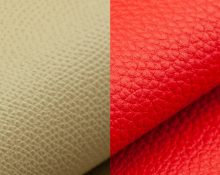
creativecommons.org
Today, in our multinational world, more and more people want to emphasize their origin. Some people prefer national cuisine, some regularly visit relatives in their small homeland and listen to folk music, and some even decide to introduce elements of modernized traditional clothing into their wardrobe. In this material we will tell you what Cossack is and what varieties it has. A special feature of the kazakin is its multi-vector nature: in fact, outerwear with a similar shape can be found in many countries; Cossacks from different locations will differ fundamentally mainly in fabric and decor. At the end of the article, we will describe step by step how to properly sew a cossack with your own hands, what types of cossacks there are and how to adapt it to almost any style.
What is Kazakin?
Kazakin is a type of outerwear that is found in different countries. The appearance of the Cossack may vary slightly.Most often, the word “Cossack” is used to refer specifically to men’s outerwear, but in some countries (for example, France, Ukraine and Russia) the same term was used to refer to women’s outerwear as well. Externally, the Cossack looks like an open jacket, expanding towards the bottom.
Where did the Cossack come from and what varieties does it have?
The first mentions of the casaquin are found in France (even the name of this type of clothing comes from the French “casaquin”) in the middle of the 18th century. In France, the fitted Cossack jacket, which was cut with a peplum, fastened with buttons, was popular in France and was worn mainly by women. Initially, Parisian fashionistas wore the Cossack as home clothes, but later the fabric of this product became thicker and they began to wear it for visits or walks. Most likely, this outfit came from France to Russia around the beginning of the 19th century, where it became a popular type of outerwear by the mid-1850s. The Russian type of Cossack resembled a shortened caftan, decorated at the waist with small ruffles. Unlike the French ancestor, the domestic version of the Cossack was equipped with a stand-up collar and fastened with hooks. The collar and sleeves were trimmed with braid or colored threads. Already by the beginning of the twentieth century in the Russian Empire, the Cossack became part of the uniform of police officers and policemen. But this word could also be used, including in relation to women's caftans and any other variations of traditional Russian clothing.
Kazakin is also the name of the traditional Tatar caftan. Contrary to the logical “French” explanation of the appearance of the Cossack, the Tatars claim that their Cossack came from the Tatar military uniform and has nothing to do with the foreign namesake.Just like the Russian caftan, it was fitted and had ruching at the back, but in appearance it rather resembled a long priest’s half-caftan.

creativecommons.org
Thus, today very different types of outerwear are called Cossack. These can be either quite ordinary things, reminiscent of insulated jackets that you can wear to work, or fancy ethnic outfits for Tatar Sabantuys. Cossacks have changed under the influence of new fashion trends and designer preferences, but they have retained common features: fitted silhouettes, flared bottoms, accent sleeves and collars.
What materials are needed to sew a cossack with your own hands:
- A piece of dense material. The choice depends on which version of the cossack you are going to sew: it can be wool or thick cloth.
- Sewing supplies (needles, threads, scissors, pins, chalk, etc.).
- Pattern adjusted to the model's dimensions.
- Material for the design of sleeves and collar. It can be braid, fur or even lace.
- Hooks or buttons.
Step-by-step sewing of a cossack with your own hands at home
This pattern is designed for ordinary seamstresses who have already dealt with sewing outerwear. Please note that the presented pattern does not have side seams: the shelves are connected to the side of the back. If desired, you can also sew pockets to the kazakin to add functionality.
- Fasten the pattern already fitted to the model on the fabric and leave an allowance of 2.5 cm. Watch the position of the grain thread (if you choose to sew a cossack from fabric).
- Open out the pieces, leaving room for allowances. You should have: paired shelves with side parts, the middle of the back, the lower part of the back, two upper and two lower parts of the sleeve, a collar.If desired, you can add two strips to the pockets.
- Connect the middle part of the back and shelves with the side parts.
- Sew the lower part of the back to the resulting fragment.
- Work out the gathering on the back and secure it.
- Sew the collar into the neckline.
- Connection between the upper and lower parts of the Cossack sleeves.
- Sew the sleeves into the armholes.
- Hem all raw edges.
- Secure the hooks and loops.
- Decorate the collar and sleeve edges with embroidery, braid or fur.


 0
0





